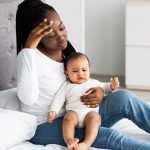
Huntington’s disease is a devastating, fatal neurological illness with little means of treatment, but a new study in mice offers a glimmer of hope. Huntington’s occurs when inherited genes cause key proteins to fold and clump together within brain cells. Over time, this severely hampers brain function and patients lose the ability to talk, walk, swallow and focus. There’s no cure, and the illness is typically fatal within a decade or two of symptom onset. However, new research in mice is investigating the utility of “peptide-brush polymers” as treatment. The peptides involved in the therapy are naturally occurring proteins that may block the lethal clumping of Huntington’s-associated proteins within brain cells. In studies conducted in a mouse model of Huntington’s, use of the polymer treatment appeared to “rescue” brain cells harmed by protein clumping and reverse Huntington’s symptoms, a joint team from Northwestern University and Case Western Reserve University reported. Of course, studies in mice sometimes fail to deliver the same results in people. Nevertheless, study co-lead author Nathan Gianneschi, of Northwestern University in Chicago, said “it’s quite compelling when you see animals behave more normally than they would otherwise” after the polymer treatment. Gianneschi, a professor of chemistry at Northwestern, has a personal stake in the new research. “My childhood friend was diagnosed with Huntington’s at age 18 through a genetic test,” he said in… read on > read on >





















-300x200.jpg)







-300x169.jpg)








